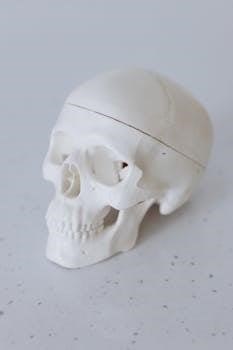Overview of HESI Med-Surg Exam
The HESI Med-Surg exam is a crucial assessment for nursing students, evaluating their grasp of medical-surgical nursing concepts. It gauges critical thinking and application of knowledge essential for safe patient care.
Purpose and Importance of the HESI Med-Surg Exam
The HESI Med-Surg exam serves as a vital benchmark, assessing a nursing student’s competency in the complex field of medical-surgical nursing. Its primary purpose is to evaluate whether students have acquired the necessary knowledge and critical thinking skills to manage patients with diverse medical conditions. Success on this exam often influences progression in nursing programs and can be a predictor of success on the NCLEX-RN examination. Furthermore, the exam plays a significant role in ensuring that future nurses are well-prepared to provide safe and effective care to patients across various healthcare settings. The exam’s results highlight areas of strength and weakness, guiding students toward targeted improvement. It ultimately contributes to the development of skilled and confident nursing professionals.
Content Areas Covered in the HESI Med-Surg Exam

The HESI Med-Surg exam encompasses a broad spectrum of topics pertinent to medical-surgical nursing practice. Key areas include the pathophysiology, assessment, and management of common medical conditions, such as cardiovascular, respiratory, and endocrine disorders. Furthermore, it delves into the intricacies of fluid and electrolyte balance, acid-base disturbances, and intravenous therapy. The exam also emphasizes understanding the nursing process, medication administration, and patient education. Additionally, topics such as perioperative care, pain management, and wound care are frequently assessed. Geriatric considerations and the impact of aging on various body systems are also included, ensuring comprehensive coverage of essential nursing knowledge. The exam aims to evaluate a student’s ability to apply theoretical knowledge to practical clinical scenarios.

Study Guide Components and Resources
Effective study guides include key topics, practice questions, and test banks. These resources help students master content and improve test-taking skills for the HESI Med-Surg exam.
Key Topics and Concepts in Med-Surg Nursing
The HESI Med-Surg exam heavily emphasizes understanding core concepts like the nursing process, which involves assessment, diagnosis, planning, implementation, and evaluation. Students must grasp pathophysiology, recognizing the mechanisms behind diseases like cirrhosis and heart conditions. Key topics also include fluid and electrolyte balance, acid-base regulation, and the impact of aging on various body systems. Furthermore, students need a solid understanding of common medical-surgical conditions, including respiratory failure and shock. It’s crucial to grasp the normal aging effects on vital signs, nutrition needs for elderly patients, and the principles behind intravenous therapy and drug calculations. Mastering these concepts ensures a comprehensive approach to patient care.
Available Study Guides and Materials
Numerous resources are available to aid in HESI Med-Surg exam preparation; These include comprehensive study guides specifically tailored for the exam, often incorporating practice questions and detailed explanations. Many resources are available in PDF format, allowing for easy access and printing. There are also specialized materials that focus on specific topics such as intravenous therapy and acid-base balance. Some guides provide summaries of key topics, while others offer in-depth reviews. Students can also find study guides that cater to different learning styles, including visual aids and memory aids. Additionally, numerous online platforms offer study materials, including practice tests and flashcards to reinforce concepts.
Practice Questions and Test Banks
Practice questions and test banks are indispensable tools for HESI Med-Surg exam preparation. These resources allow students to apply their knowledge in a simulated testing environment. Many test banks include questions that closely mirror the format and difficulty of the actual exam, helping students familiarize themselves with the testing style. Furthermore, these practice questions often provide rationales for correct and incorrect answers, enabling students to understand the reasoning behind each choice. This process helps identify areas of weakness that require further study. Utilizing practice questions and test banks effectively builds confidence and improves performance on the HESI exam. Some platforms even offer timed practice tests to simulate the pressure of the exam setting.

Effective Study Strategies
Effective study strategies are crucial for HESI success. Time management, flashcards, and reviewing nursing processes enhance comprehension. Focused and consistent study habits are key for success.
Time Management and Study Planning
Effective time management is paramount when preparing for the HESI Med-Surg exam. Create a structured study schedule, allocating specific time slots for different content areas. Prioritize topics based on their weight on the exam and your personal areas of weakness. Break down large study sessions into smaller, more manageable chunks to prevent burnout. Integrate regular breaks to maintain focus and concentration. Utilize a planner or calendar to track your progress and ensure you stay on schedule. Consistency is crucial, so stick to your plan as much as possible. Review your plan regularly and adjust it as needed to accommodate your learning pace and any unexpected events. Remember, a well-structured study plan can significantly enhance your preparation and reduce exam-related stress.
Utilizing Flashcards and Memory Aids
Flashcards are invaluable tools for memorizing key terms, medications, and disease processes for the HESI Med-Surg exam. Create flashcards with concise information, focusing on essential details. Use both physical and digital flashcards to cater to different learning styles. Regularly review the flashcards, employing spaced repetition to reinforce memory. Incorporate mnemonic devices to remember complex medical concepts. For example, use acronyms or visual imagery to link information. Explore online platforms for pre-made flashcards or create your own. Focus on active recall rather than passive reading when reviewing flashcards. Regular use of flashcards and memory aids enhances retention and recall. This helps you to quickly access crucial information during the exam. This method greatly improves your chances of success.
Reviewing Key Nursing Processes and Basics
A thorough review of the nursing process is paramount for success on the HESI Med-Surg exam. Understand the steps⁚ assessment, diagnosis, planning, implementation, and evaluation. Focus on how each step applies to various medical-surgical conditions. Master the basics of patient assessment, including vital signs, physical assessments, and health history collection. Review fundamental nursing skills, such as medication administration, wound care, and patient positioning. Familiarize yourself with common nursing diagnoses and their associated interventions. Understand the importance of prioritizing care based on patient needs and acuity. Ensure a solid understanding of basic anatomy, physiology, and pathophysiology. Use case studies to apply the nursing process to different scenarios. Practice connecting assessment findings to appropriate nursing interventions. Strengthening your knowledge of these fundamentals will provide a solid base for success on the HESI Med-Surg exam.

Specific Content Areas
The HESI Med-Surg exam covers specific areas like common medical conditions, IV therapy, and geriatric care. Understanding these key content areas is vital for success on the exam.
Common Medical-Surgical Conditions
The HESI Med-Surg exam requires a strong understanding of prevalent medical-surgical conditions. This includes respiratory issues such as asthma and respiratory failure, requiring knowledge of assessment, treatment, and patient education. Cardiovascular conditions, like heart failure and dysrhythmias, also demand attention to cardiac output and vital signs. Furthermore, gastrointestinal problems, including cirrhosis and ulcers, are important to grasp, especially concerning hematemesis and nutritional needs. Students should also familiarize themselves with neurological disorders, like strokes, and their impact on mobility and independence. A comprehensive approach to these conditions is essential for success, focusing on both physiological aspects and nursing interventions.
Intravenous Therapy and Acid-Base Balance
Understanding intravenous therapy and acid-base balance is critical for the HESI Med-Surg exam. This includes knowing the different types of IV solutions, like hypertonic solutions used for intravascular dehydration, and their effects on fluid balance. Students need to understand acid-base regulation and how various conditions, such as respiratory failure, can disrupt it; Furthermore, the ability to interpret arterial blood gas (ABG) results and recognize imbalances, such as acidosis or alkalosis, is vital. Nursing interventions related to IV administration, monitoring, and addressing imbalances must be well-understood. A strong grasp of these concepts ensures safe and effective patient care in diverse medical-surgical scenarios.
Geriatric Considerations in Med-Surg
The HESI Med-Surg exam emphasizes geriatric considerations due to the unique needs of older adults. Normal aging effects on body systems, like decreased cardiac output and lung efficiency, are crucial. Students must understand how these changes impact vital signs and increase the risk of conditions like syncope and falls. Nutritional assessments and specific dietary needs for elderly patients are essential components. Furthermore, recognizing common age-related changes and their implications for medication administration and overall care is vital. The exam will likely assess the student’s ability to provide tailored care to geriatric patients, addressing their specific physiological and psychosocial needs within the med-surg setting.




